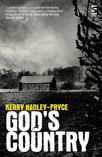Where to put your best foot forward: psycho-physiological responses to walking in natural and urban
- Kerry Hadley
- Jul 5, 2018
- 3 min read
I've been gorging on research. Over-stuffed with it now. The hope was that I could write 5000 words on the premise of my own research by the end of this week. Now I'm saying by the end of next week because I feel like I've had a break-through and need to let matters settle. I have though, found this research: Gidlow, C, Jones, M. V., Hurst, G, Masterson, D, Clark-Carter, D., Tarvainen, M. P., Smith, G, Nieuwenhuijsen, M. (2015) ‘Where to put your best foot forward: Psycho-physiological responses to walking in natural and urban environments.’ Journal of Environmental Psychology 45 (2016) 22-29. Here's the abstract and some:
'Abstract: There is
convergent evidence that natural environments allow restoration from stress. This randomised, cross-over, field-based trial compared psychological and physiological responses of unstressed individuals to self-paced 30-min walks in three pleasant environments: residential (urban), natural (green), and natural with water (blue). Changes from baseline (T1) to T2 (end of 30-min walk), and T3 (30 min after leaving environment) were measured in terms of mood, cognitive function, restoration experiences, salivary cortisol, and heart rate variability (HRV). In the final sample (n 1⁄4 38; 65% male; mean age 40.9 ± 17.6 years), mood and cortisol improved at T2 and T3 in all environments. Green and blue environments were associated with greater restoration experiences, and cognitive function improvements that persisted at T3. Stress reduction (mood and cortisol changes) in all environments points to the salutogenic effect of walking, but natural environments conferred additional cognitive benefits lasting at least 30 min after leaving the environment.' P22
'Participants selected lived in the West Midlands, and were over 18 years old, non-smokers, not pregnant, not on medication, able to walk for 30 minutes. All participants walked for 30 min in each of three environments (residential (urban), natural (green), and natural with water (ie the canal) (blue).'
'Overall, our findings indicate that light intensity physical activity in a natural environment confers greater benefit for restorative experience and cognitive function, which persisted for at least 30 min after leaving the environment, when compared with a similar walk in an urban environment. For immediate improvements in measures of well-being you can put your best foot forward in a pleasant urban or natural environment, but for the additional improvement in cognitive function, choose a natural environment.' P28
Further, the best outcome was a walk in a 'blue' environment.
This made me think about my own routines, which are part of my writing routine. I walk (now, with the dog) in all of those environments. Look: first 'urban', then 'natural blue', then 'natural green' and back in reverse:



These pictures chart my walk with the dog every day, and I'm putting this change of environment (albeit well-known to me - by which I mean it's not a 'drift' or a 'detourment' for me) down as part of the process of my writing. According to Oppezzo & Schwartz's research into walking and creativity, a 30 minute walk (I usually do twice, or even four times that) improves your creativity PROVIDED you use the walk as 'thinking time'. Walking, they say is not something they can prove will give you that 'shower effect' of inspiration, but the actual process of walking, thinking about a problem (in their case, brainstorming or coming up with a new idea - specifically, in their case coming up with as many new ideas to use a common everyday item, for example, a what else would you do with a key?) will be improved by walking. That is to say, walking improves your creativity, both at the time of walking and afterwards when you stop walking. Here, look: https://www.ted.com/talks/marily_oppezzo_want_to_be_more_creative_go_for_a_walk
I can confirm this has happened to me. So much so, I have a better idea where I'm going with this novel. I realised that it has to come from a 'theory' and I've chosen Loffler's Literary Psychogeography. This means it has to be less sporadic; from the point of view of one man; that the movement through the place/space has to be more meaningful; and that the 'visitor' (ie the girl) has to be more ethereal, more mystical as she is visiting him from his past, so the idea must be more temporal. This idea of temporality is one which, I think, fits.
Next, I need to re-read Loffler, but first, I'm making some changes to the manuscript before I lose that residual creativity from this morning's walk.









Comments